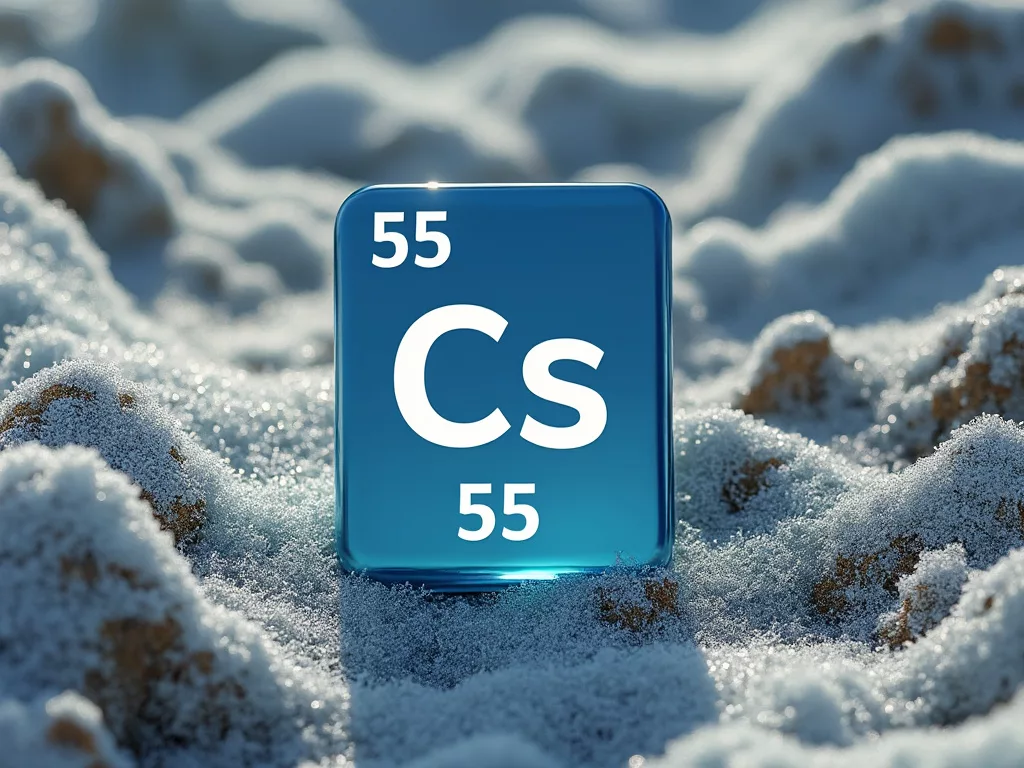Cesium is a chemical element with the symbol Cs and atomic number 55. It’s a soft silvery-golden alkali metal that’s highly reactive and often found in small quantities in minerals like pollucite. Let’s dive into what makes cesium unique and why it’s more than just another element on the periodic table.
Table of Contents
What is Cesium?
Cesium is the last element in the alkali metal group, which means it’s very similar to sodium and potassium but with some unique twists. When you think of cesium, imagine a metal so soft you could cut it with a butter knife (if you were brave enough to handle it, that’s another story due to its reactivity).
Properties of Cesium
- Reactivity: Cesium is extremely reactive. It catches fire when exposed to air, turning into cesium oxide. Drop it in water, and it will react with explosive results due to the formation of hydrogen gas.
- Melting Point: It has the lowest melting point of any metal, melting at just over 28.5°C (83.3°F). This means on a hot summer day, cesium could literally melt in your hand.
- Color: Pure cesium has a silvery-golden color, but when exposed to air, it can turn into a dull gray due to oxidation.
Uses of Cesium
- Atomic Clocks: Perhaps the most famous use of cesium is in atomic clocks. Cesium’s isotopes, particularly cesium-133, are used because of their very predictable frequency of atomic vibration. This precision has made cesium clocks the standard for defining the second.
- Oil Drilling: Cesium formates are used as drilling fluids in the oil industry. They help in reducing formation damage and controlling the pressure of the well.
- Photoelectric Cells: Cesium’s ability to emit electrons when hit with light makes it useful in photoelectric cells.
- Medical Uses: Cesium-131, a radioactive isotope, is used in brachytherapy to treat cancer by targeting tumor cells directly with radiation.
See also: 10 Most Dangerous Metals
Where Does Cesium Come From?
Cesium is not abundant; it’s the 46th most common element in Earth’s crust. It’s mainly extracted from minerals like lepidolite and pollucite. The mining of these minerals, especially for other valuable elements like lithium and rubidium, often results in cesium as a byproduct.
Safety and Handling:
Handling cesium requires caution:
- Gloves and Protective Clothing: Due to its reactivity, direct contact should be avoided.
- Inert Atmospheres: Storage in an inert gas like argon prevents it from reacting with air or moisture.
Interesting Facts About Cesium
- Cesium in Nature: While rare, cesium does occur naturally. For instance, the mineral pollucite, found in places like Maine, USA, and Manitoba, Canada, contains significant amounts of cesium.
- Space Exploration: Cesium ion engines are used in space for propulsion. They provide a gentle but continuous thrust, making them perfect for long-duration space missions.
Conclusion
Cesium might not be the most talked-about element, but its applications are critical in modern technology, from keeping time with atomic precision to aiding in medical treatments. Its unique properties make it a fascinating study in chemistry and physics, proving that sometimes, the less common elements can have the most significant impacts on our daily lives. Next time you check your phone for the time, remember, there might just be a tiny bit of cesium making sure that time is spot on.





















